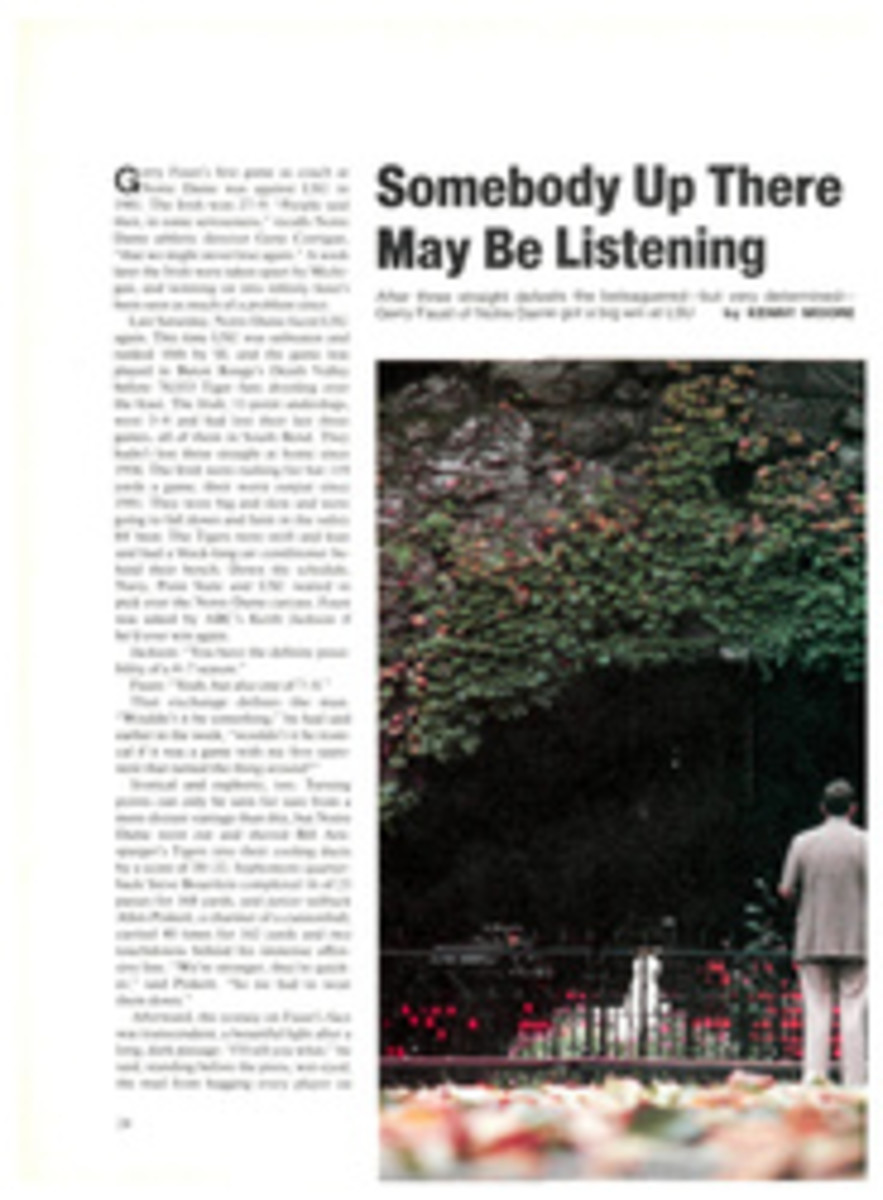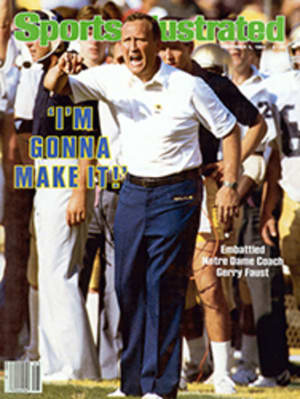
THE AMERICAN HUNTER STILL BALKS AT SWITCHING FROM LEAD TO STEEL SHOT
For decades, controversy has surrounded the use of lead shot in waterfowl hunting. But there's no more room for controversy and not much more time for debate. The facts are clear and indisputable. Lead shot kills both in the air and on the ground. Each year this nation's waterfowl hunters pump more than 3,000 tons of lead shot into the skies at ducks and geese. The American hunter has few passions as strong as his love of duck hunting, yet by persisting in the use of lead shot he's destroying the very object of his affection. Most of the barrage of lead misses the mark and falls to earth, back to the birds' feeding grounds—wetlands and corn and rice fields.
Mistaking the lead pellets for the pebbles they normally ingest to aid the digestive process, ducks and geese eat the shot. Some of the pellets are expelled, but others pass into the birds' gizzards, where they gradually dissolve and enter the bloodstream. In time the toxic lead affects the liver, kidneys, brain and heart, even the nervous system. The poisoned birds become anemic and lose weight and strength. Their wings sag, and before long they cannot fly or even walk. The simplest movements become painful. Too weak to swallow, many birds starve to death, or predators take them. In a single common 2¾-inch, 12-gauge shotgun shell there can be as many as 280 lead pellets. Five such pellets, if swallowed, will kill a healthy mallard in a matter of days. Even birds that swallow but a single lead pellet may eventually die.
Once lead has entered the food chain, it continues to kill. Some hawks that feed on the ailing ducks develop lead poisoning themselves and die. In addition, numerous shore and upland game birds, loons, pheasants, doves and quail all die from eating spent lead shot. Last year the National Wildlife Federation documented 13 lead-poisoning deaths of bald eagles—the federation counts 45 over the last three years. And these numbers are almost certainly mere fractions of actual fatalities; as with other birds debilitated by lead ingestion, the eagles tend to seek seclusion and die unseen in remote areas, from where they're not recovered. Even in nonfatal doses, lead has been found to impair some birds' sight, hearing and motor reflexes. Sublethal lead intoxication, as it is called, also diminishes resistance to disease and infection; it even hurts the birds' chances of reproducing successfully.
Depending on breeding-habitat conditions in Canada and the northern U.S., between 70 and 120 million waterfowl fly south each fall along the nation's four main migration flyways. An estimated 2% to 3% of these birds already suffer from some degree of lead poisoning. Many are destined to die, whether they survive the hunting season or not. Each year as many as 14 million waterfowl will be taken by hunters, and another two to three million will die from lead poisoning caused by the ingestion of shot. And as the number of waterfowl hunters increases, so does the amount of lead blasted into the skies. Too, for every hen that dies of lead poisoning we lose the birds she might have produced and the generations that would have followed—an incalculable toll.
Lead shot has been used by bird hunters since it was introduced in England in the late 18th century. Ill effects from its use first came to light there in the 1840s and in the U.S. in the 1870s. But waterfowl were so abundant that deaths from poisoning were regretted but largely ignored. By the 1930s and '40s there were instances in the U.S. of huge flocks of birds—10,000, 16,000, 20,000—dying of lead poisoning in a short period at a single lake, pond or marsh.
Of course, then and now, the majority of lead-poisoning deaths have not occurred in these highly visible die-offs. Waterfowl ingest the pellets individually and weaken over the course of days and weeks, usually dying unobserved by humans.
The well-known research of Frank C. Bellrose, a wildlife specialist with the Illinois Natural History Survey, for which he examined the gizzards of nearly 40,000 ducks of 11 different species, proved without question that ingested lead shot was killing the birds. In 1959, Bellrose came up with the estimate that perhaps 3% of the U.S. waterfowl population died each year from lead poisoning. The toll in the years since has verified his estimate. Bellrose was believed by both the Federal Government and the ammunition industry, but little, if anything, was done to improve matters. When the added expense and inconvenience of producing substitute shots were recognized, manufacturers kept producing lead shot, hunters kept shooting it, and the ducks kept ingesting it—and dying by the millions.
By 1957 the ammo industry had the capability of producing a nontoxic shot, of either iron or steel, but it wasn't pressed to do so. After years of delay the government, grasping the enormity of lead-shot poisoning and its inroads on the waterfowl population, finally stepped in. In 1976 the Fish and Wildlife Service took the first steps toward phasing out lead shot by designating steel-shot-only hunting zones for waterfowl—areas in which lead poisoning was causing the greatest damage. Today, 33 states have such zones, and more are expected to be named. In five consecutive court decisions since 1976—two federal and three state—justices have upheld steel-shot regulations.
Now that an economical steel-shot load that is virtually as effective and reliable as lead shot is being manufactured, the question should no longer be whether there will be a complete changeover to steel-shot-only waterfowl hunting, but how soon that change will come. The National Wildlife Federation and the Atlantic, Central and Mississippi Flyway Councils are all pushing for steel-shot-only waterfowl hunting. Indeed, the Central Flyway Council wants to eliminate lead shot from its region (a 10-state area bounded by the Rockies and the Mississippi) by 1987. Nebraska now has a statewide nonbinding resolution against toxic shot. It is not against the law to use lead shot, but hunters are on their honor to comply. Iowa and Florida are expected to pass statewide steel-shot regulations by the 1985-86 and '86-87 waterfowl seasons, respectively. Many other groups are opposed to lead shot. The American Museum of Natural History is against it, as are the Izaak Walton League of America and the International Association of Fish and Wildlife Agencies. Yet when shotguns sounded this fall, they were firing mostly lead. The ammunition companies probably aren't going to stop making and selling lead shot unless they are forced to by the government, or unless hunters voluntarily switch to steel.
A number of hunters have been outspoken in their opposition to steel shot, complaining that it lacks the range and power of lead, that it leaves more crippled ducks, and that it is more expensive. The major hang-up over steel shot, though, may be that it demands more skill and concentration. You simply can't shoot steel loads in the same manner as lead loads. Since steel shot forms a tighter pattern, the hunter must adjust his swing and lead time for every shot and every circumstance.
In a standard high-brass 2¾-inch load, steel shot will travel 100 feet-per-second faster than lead shot. Because steel is one-third the weight of lead, it also slows down much faster, especially after 35 or 40 yards. But at 35 yards there is virtually no difference between steel and lead shot, and at 40 there is only a minimal difference in knockdown power. Indeed, tests show that at 40 yards steel shot packs nearly the same wallop as lead and has 25% more pellets. While he may hit more birds with lead, the skilled hunter will kill more with steel. But it's important for hunters to remember that in replacing lead loads with steel, they must account for the difference in weight and use steel loads that are at least two shot sizes heavier than the lead loads normally used for waterfowl.
There is little evidence to support claims that steel shot cripples more birds than lead. In a dozen field studies in which hunters didn't know what kind of shot they were using, there were no significant differences in the number of ducks crippled by lead and steel shot. For years hunters have charged that steel shot chewed up their gun barrels. True, early steel loads did scar barrels, especially those produced before 1950, when barrels were made with softer steel. The newer steel loads, though, are manufactured from a softer, annealed carbon steel and packed in plastic wad cups that prevent the shot from rubbing against the barrel or affecting the gun's choke.
Steel loads are still more expensive than their lead counterparts, but not by much. In the past, price differences were as high as $10 for a box of 25. Today, several companies are selling 2¾-inch, 1‚⅛-ounce steel loads for about $14 a box; lead loads go for about $12.
For some sportsmen, the most difficult step toward accepting steel shot is simply giving it a try. Even if a hunter has never shot anything but lead, he can still do fine with steel if he will but take the time to learn how to use it properly. If he does, he'll get his ducks.

